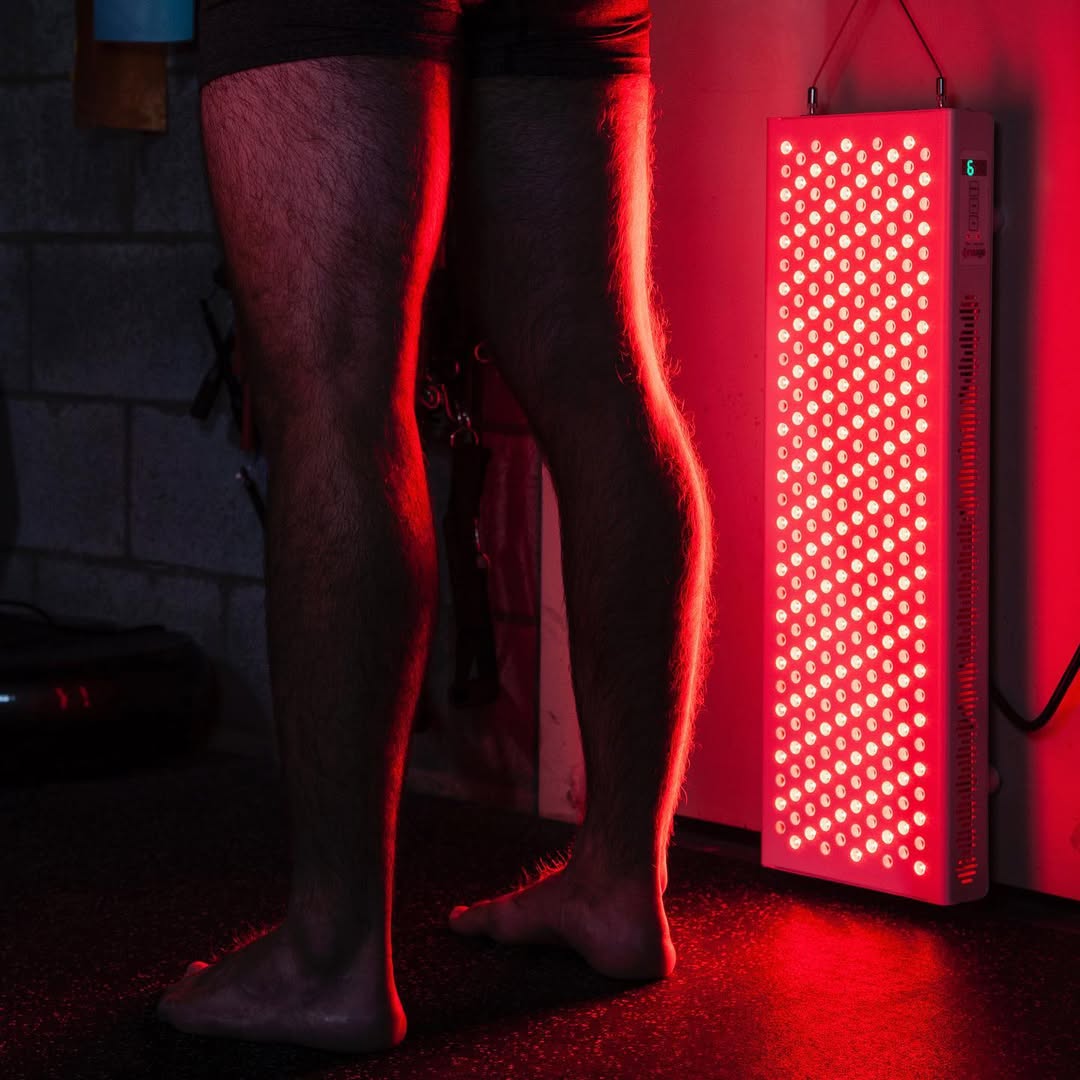![]() Free Shipping
Free Shipping ![]() Buy Now, Pay Later
Buy Now, Pay Later ![]() Eligible
Eligible
Red Light Therapy vs. Red Heat Lamps: Which One is Right for You?

In recent years, light therapy has gained significant attention for its potential health benefits, from pain relief to skin rejuvenation. Among the various options available, red light therapy (RLT) and red heat lamps are two popular choices—but they serve different purposes.
If you’re considering investing in light-based therapy, it’s essential to understand the differences between these two technologies. Are they the same? Do they offer similar benefits? Which one is better for your needs?
In this comprehensive guide, we’ll compare red light therapy vs. red heat lamps, exploring their mechanisms, benefits, risks, and ideal use cases. By the end, you’ll have a clear understanding of which option aligns best with your health and wellness goals.
Table of Contents
- What is Red Light Therapy?
- How It Works
- Key Benefits
- Common Uses
- What Are Red Heat Lamps?
- How They Work
- Key Benefits
- Common Uses
- Key Differences Between Red Light Therapy and Red Heat Lamps
- Light Wavelengths
- Heat Emission
- Penetration Depth
- Safety Considerations
- Which One Should You Choose?
- For Pain Relief
- For Skin Health
- For Muscle Recovery
- For General Relaxation
- Potential Risks and Side Effects
- Red Light Therapy Risks
- Red Heat Lamp Risks
- Final Verdict: Which is Better?
1. What is Red Light Therapy?
How It Works
Red light therapy (RLT), also known as low-level laser therapy (LLLT) or photobiomodulation (PBM), uses specific wavelengths of red and near-infrared (NIR) light (typically between 630nm to 850nm) to penetrate the skin and stimulate cellular energy production.
Unlike heat lamps, RLT devices emit little to no heat, focusing instead on photochemical reactions within cells. The primary mechanism involves boosting mitochondrial function, leading to increased adenosine triphosphate (ATP) production—the energy currency of cells.
Key Benefits of Red Light Therapy
- Skin Rejuvenation: Stimulates collagen production, reducing wrinkles and improving skin elasticity.
- Wound Healing: Accelerates tissue repair and reduces inflammation.
- Pain Relief: Helps with joint pain, arthritis, and muscle soreness.
- Hair Growth: Promotes follicle stimulation in cases of androgenetic alopecia.
- Mood & Sleep: May improve circadian rhythm and reduce seasonal affective disorder (SAD).
Common Uses
- Dermatology clinics for acne and anti-aging treatments
- Physical therapy for muscle recovery
- At-home LED panels for daily wellness
2. What Are Red Heat Lamps?
How They Work
Red heat lamps are incandescent bulbs that emit both red light and infrared (IR) radiation, generating significant heat. Unlike RLT, which relies on specific wavelengths, heat lamps primarily provide thermal therapy, warming muscles and tissues to promote relaxation and blood flow.
The light spectrum of heat lamps is broader, often including visible red light (600-700nm) and far-infrared (FIR) waves (3000nm-1mm). The heat penetrates superficially, making them ideal for localized warmth rather than deep cellular effects.
Key Benefits of Red Heat Lamps
- Muscle Relaxation: Soothes stiff muscles and reduces tension.
- Improved Circulation: Heat dilates blood vessels, enhancing oxygen and nutrient delivery.
- Pain Relief: Effective for back pain, cramps, and arthritis discomfort.
- Warmth Therapy: Used in saunas, spas, and for reptile habitats.
Common Uses
- Physical therapy for heat-based treatments
- Post-workout muscle relaxation
- Keeping food warm in restaurants
- Reptile and pet heating
VELLGUS Elite V2
THE #1 RATED RED LIGHT DEVICE
VELLGUS pro V2
THE #1 RATED FULL BODY RED LIGHT DEVICE
3. Key Differences Between Red Light Therapy and Red Heat Lamps
1. Light Wavelengths
- Red Light Therapy: Uses 630nm-850nm (red & NIR) for cellular benefits.
- Red Heat Lamps: Emits 600nm-3000nm+, including far-infrared for heat.
2. Heat Emission
- RLT: Minimal heat, focuses on light absorption.
- Heat Lamps: Significant heat output, primarily for warming tissues.
3. Penetration Depth
- RLT: Penetrates 5-10mm into skin, affecting deeper tissues.
- Heat Lamps: Mostly superficial, warming the skin’s surface.
4. Safety Considerations
- RLT: Safe for daily use with minimal side effects.
- Heat Lamps: Risk of burns if used improperly or for too long.
4. Which One Should You Choose?
For Pain Relief
- RLT: Better for chronic pain, joint inflammation, and deep tissue healing.
- Heat Lamps: Better for acute muscle stiffness and immediate warmth.
For Skin Health
- RLT: Superior for anti-aging, acne, and collagen stimulation.
- Heat Lamps: Not effective for skin repair; may cause dryness.
For Muscle Recovery
- RLT: Enhances cellular repair and reduces inflammation.
- Heat Lamps: Provides temporary relief through warmth.
For General Relaxation
- RLT: Mild relaxing effects (indirectly via improved circulation).
- Heat Lamps: Immediate soothing warmth, ideal for relaxation.
5. Potential Risks and Side Effects
Red Light Therapy Risks
- Eye strain if used without protective goggles.
- Mild redness in sensitive skin (rare).
Red Heat Lamp Risks
- Burns from prolonged exposure.
- Dehydration if used excessively.
6. Final Verdict: Which is Better?
The choice between red light therapy and red heat lamps depends on your goals:
- Choose RLT if: You want cellular rejuvenation, skin benefits, or deep tissue healing.
- Choose Heat Lamps if: You need immediate warmth, muscle relaxation, or superficial pain relief.
For optimal results, some users combine both—using heat lamps for relaxation and RLT for long-term healing.
Conclusion
Both red light therapy and red heat lamps offer unique benefits, but they serve different purposes. Understanding their mechanisms and applications will help you make an informed decision based on your health needs.
Have you tried either of these therapies? Share your experiences in the comments below!
Would you like recommendations for specific devices? Let us know—we’d love to help you find the best option for your wellness journey!








